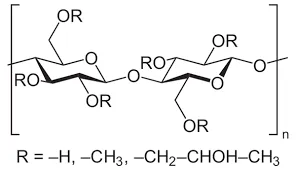
ઓક્ટોબર . 21, 2024 21:32 Back to list
hydroxypropyl methyl cellulose uses
The Versatile Uses of Hydroxypropyl Methylcellulose
Hydroxypropyl methylcellulose (HPMC) is a semi-synthetic polymer derived from cellulose, a natural polymer found in the cell walls of plants. It has gained significant attention in various industries due to its versatile properties and applications. This article will explore the diverse uses of HPMC across different fields, highlighting its significance in modern formulations.
Pharmaceutical Applications
One of the most critical applications of HPMC is in the pharmaceutical industry. As an excipient, HPMC is used in tablet formulations as a binding agent, providing the necessary cohesiveness for tablets while enhancing their stability and integrity. Its film-forming capabilities allowHPMC to be used in controlled-release formulations, enabling the gradual release of active ingredients over time. This property is particularly beneficial for medications that require sustained therapeutic effects.
HPMC is also utilized in ophthalmic solutions. Its high viscosity and excellent bio-adhesive properties make it an ideal ingredient in eye drops, ensuring longer retention time on the ocular surface, thereby enhancing the bioavailability of therapeutic agents.
Food and Nutrition
In the food industry, HPMC serves various roles, acting as a thickener, emulsifier, and stabilizer. It is particularly valuable in gluten-free baked goods, where it improves texture and moisture retention. By mimicking the properties of gluten, HPMC helps achieve the desired consistency in products such as bread, cakes, and pastries, making them more palatable for individuals with gluten sensitivities.
hydroxypropyl methyl cellulose uses

Moreover, HPMC can also be found in processed foods such as sauces, dressings, and dairy products, where it assists in preventing separation and improving mouthfeel. Its ability to form a gel-like structure under certain conditions contributes to the overall quality and shelf-life of food products.
Cosmetic Industry
The cosmetic industry has recognized the benefits of HPMC for formulating personal care products. Its thickening and film-forming properties make it an excellent ingredient in lotions, creams, and gels. HPMC enhances the texture and spreadability of these products, ensuring a pleasant application experience for consumers. Additionally, its moisturizing effects provide skin conditioning benefits, making it a popular choice in skincare formulations.
Construction and Building Materials
HPMC’s versatility extends to the construction industry as well. It is used as a binding agent in cement, plaster, and other construction materials. Its water retention properties enhance the workability and performance of these materials, leading to improved adhesion and durability. HPMC also helps in controlling the setting time of mortars and plasters, making it an essential additive in modern construction practices.
Conclusion
Hydroxypropyl methylcellulose is a multifaceted compound with a wide range of applications across various industries, including pharmaceuticals, food, cosmetics, and construction. Its unique properties, such as film formation, thickening, and binding capabilities, make it an invaluable ingredient in many formulations. As industries continue to evolve and seek innovative solutions, HPMC will undoubtedly play a pivotal role in shaping future products and enhancing their performance. Whether in a tablet, a food product, or a skin cream, HPMC continues to prove its worth as a cost-effective and efficient ingredient across the board.
-
The Widespread Application of Redispersible Powder in Construction and Building Materials
NewsMay.16,2025
-
The Widespread Application of Hpmc in the Detergent Industry
NewsMay.16,2025
-
The Main Applications of Hydroxyethyl Cellulose in Paints and Coatings
NewsMay.16,2025
-
Mortar Bonding Agent: the Key to Enhancing the Adhesion Between New and Old Mortar Layers and Between Mortar and Different Substrates
NewsMay.16,2025
-
HPMC: Application as a thickener and excipient
NewsMay.16,2025
-
Hec Cellulose Cellulose: Multi functional dispersants and high-efficiency thickeners
NewsMay.16,2025







